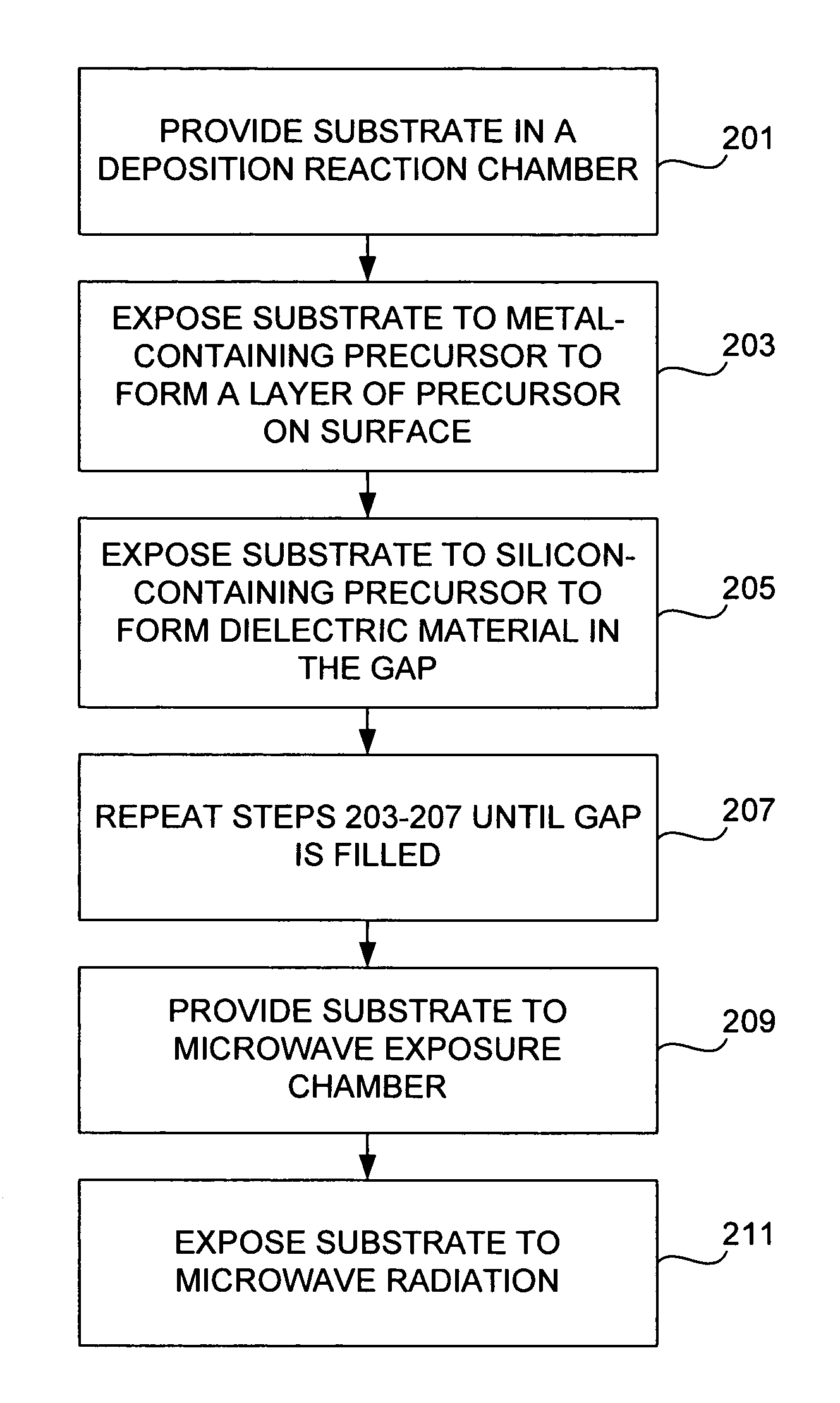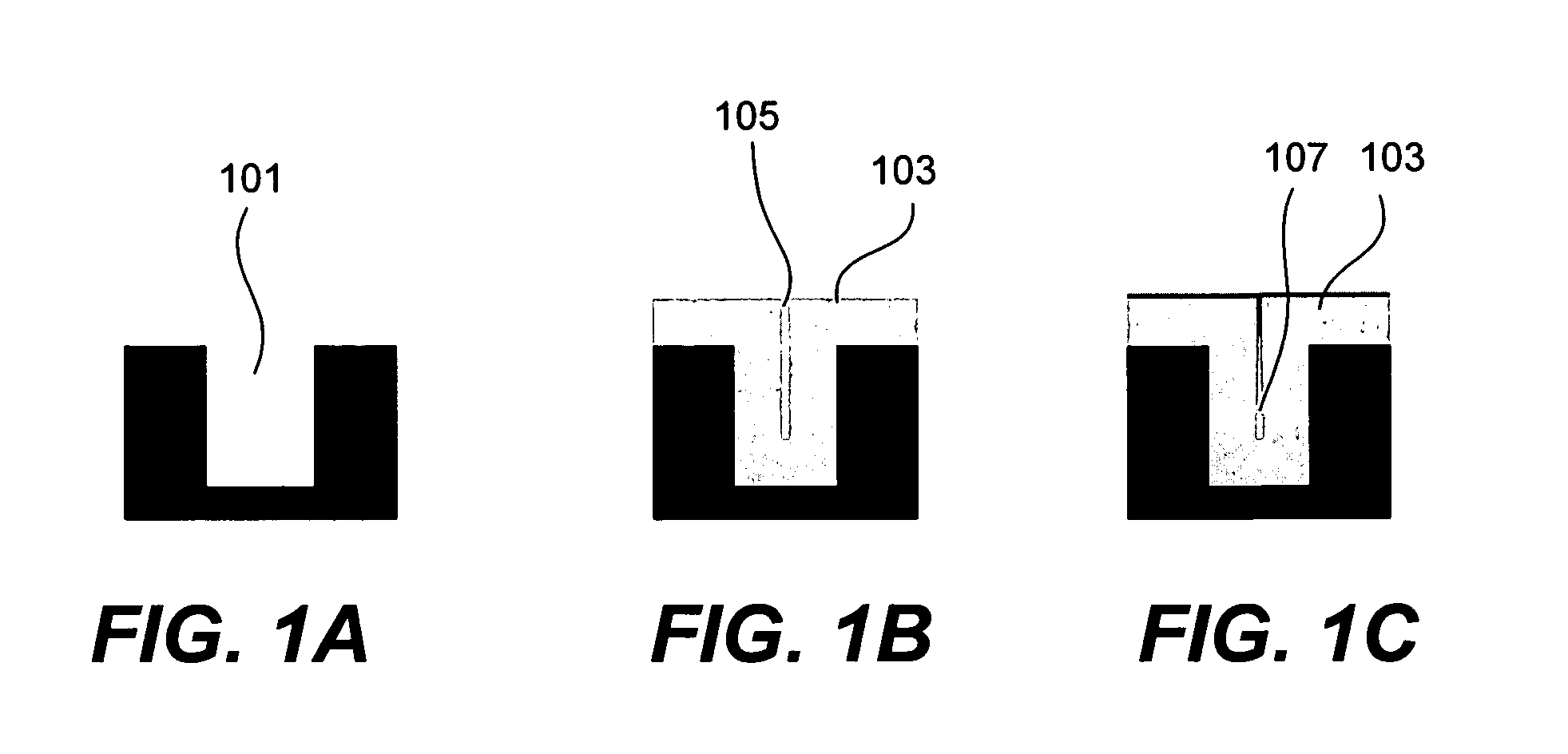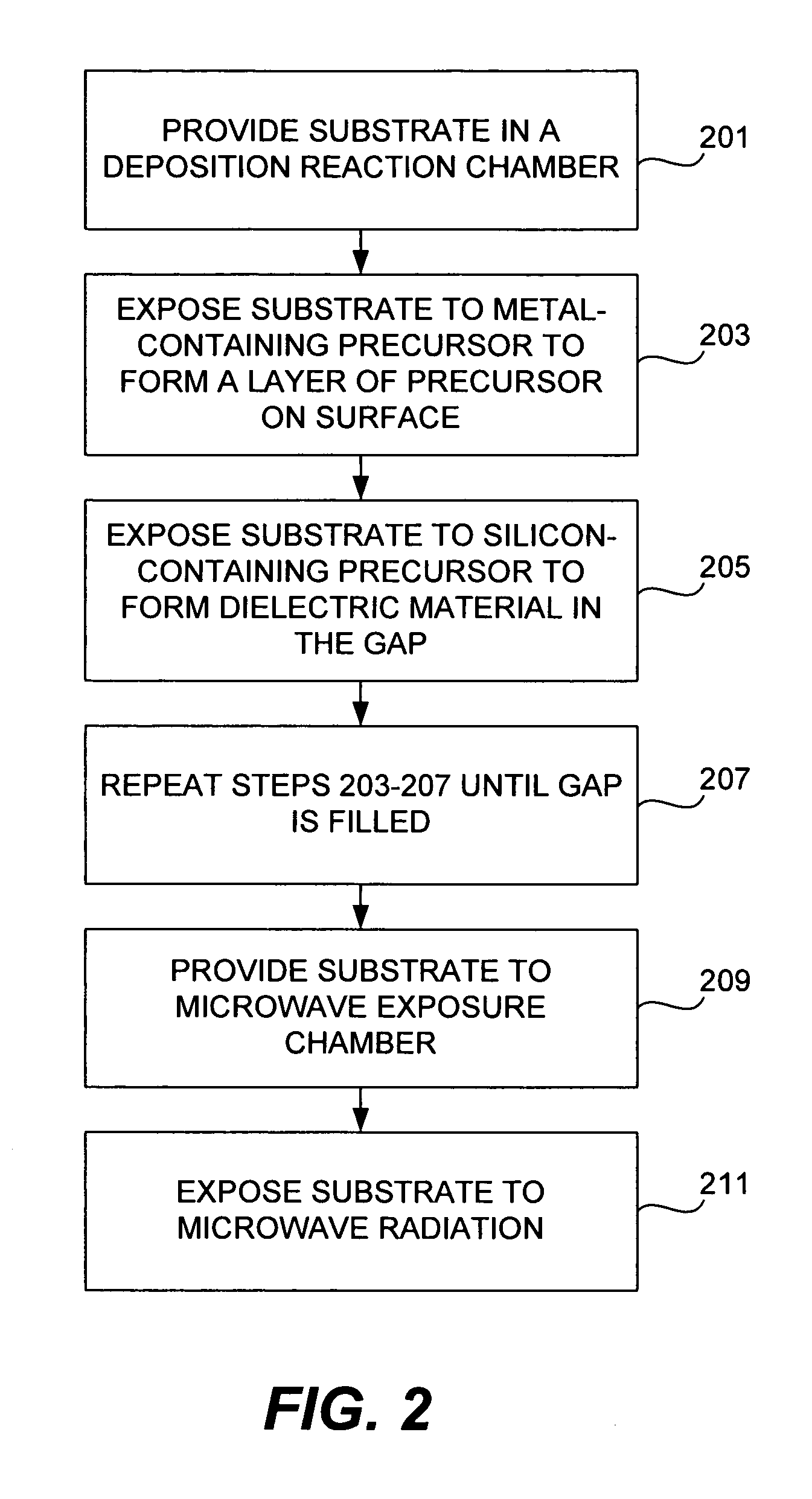Hydroxyl bond removal and film densification method for oxide films using microwave post treatment
a technology of oxide films and densification methods, which is applied in the direction of nuclear engineering, transportation and packaging, railway signalling, etc., can solve the problems of low density forming areas, increased feature depth to width, and insufficient conformal films of high aspect ratio features provided by traditional cvd techniques. , to achieve the effect of improving film properties, low thermal budget and increasing density
- Summary
- Abstract
- Description
- Claims
- Application Information
AI Technical Summary
Benefits of technology
Problems solved by technology
Method used
Image
Examples
example 1
[0070]Dielectric film was deposited on a wafer by a pulsed deposition layer process using trimethylaluminum and tris(tert-pentoxy)silanol as the metal-containing and silicon-containing precursor gases, respectively. The deposited film was then exposed to microwave radiation at 2.45 GHz and 1200 W at atmospheric pressure. The overall substrate temperature did not exceed 400° C. during the microwave exposure. FTIR spectra of the film as deposited, and after 5 min and 60 minutes is shown in FIGS. 3A and 3B, and discussed above. As noted above, the hydroxyl bonds on the Si—OH groups were completely eliminated by 60 minutes of exposure. In addition, the dielectric constant was lowered from 7.0 to 4.0—indicating that the film was completely cured. Refraction index was lowered from 1.457 to 1.445. Film shrinkage was 5.0%.
[0071]Dielectric film was deposited on a wafer in the same manner as above, and subjected to thermal anneal at 400° C. until the peak at 3400 l / cm was reduced (indicating ...
example 2
[0072]Dielectric film was deposited on a wafer in the same manner as described in Example 1. The tensile stress of the deposited was measured as 93 MPa. The deposited film was then exposed to microwave radiation at 2.45 GHz and 1200 W at atmospheric pressure and air ambient for 40 minutes. Substrate temperature was less than or equal to 400° C. Tensile stress was 323 MPa after annealing.
[0073]Dielectric film was deposited on a wafer as described above. The wafer was then thermally annealed at 600° C. for 1 hour. After annealing the tensile stress was measured at 125 MPa—significantly lower than that achieved by microwave annealing.
Other Embodiments
[0074]This method applies to the deposition of silica (USG). However, this method may also be used for depositing doped silica films, such as fluorine-doped silicate glass (FSG), phosphosilicate glass (PSG), boro-phospho-silicate glass (BPSG), or carbon doped low-k materials.
[0075]Other deposition co-reactants, such as silanols with varyin...
PUM
 Login to View More
Login to View More Abstract
Description
Claims
Application Information
 Login to View More
Login to View More - R&D
- Intellectual Property
- Life Sciences
- Materials
- Tech Scout
- Unparalleled Data Quality
- Higher Quality Content
- 60% Fewer Hallucinations
Browse by: Latest US Patents, China's latest patents, Technical Efficacy Thesaurus, Application Domain, Technology Topic, Popular Technical Reports.
© 2025 PatSnap. All rights reserved.Legal|Privacy policy|Modern Slavery Act Transparency Statement|Sitemap|About US| Contact US: help@patsnap.com



